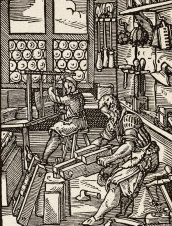"The picture would do well as an illustration to some poem" : essais de peinture et d'écriture, ou l'écrit sur l'art dans Modern Painting de George Moore
Mots-clés :
George Moore, essai, peinture impressionnisteRésumé
Published in 1893, Modern Painting by George Moore, released two years after Impressions and Opinions (1891), also a collection of essays on painting, received a warm welcome from the British press which praised its qualities of tone and style. It is true that, after a few years in Paris where he became acquainted with the Impressionist painters and spent time in studios and artistic sets, Moore, who was trying to become a painter, was well-versed in painting. His essays on art and his novels where we find painters and models, debates on representation in painting, but also many “verbal pictures” and ekphrases, represent a detour enabling him to come back to painting. The text-image relationship is at the very heart of his own practise as a writer: how can words convey pictures, whether it be in fiction or in essays? This study will focus on Modern Painting, with essays on Whistler, Manet, Ingres, Monet, and Pissaro, showing how, through the descriptions of the works of these painters, Moore tries to grasp and to gauge the specificity of their artistry and also to give an account of his own experience when gazing at images. As an attempt to grasp some enigmatic reality, that is to say the modernity of the art work, Moore’s art criticism involves the body of the spectator but also that of the painter and induces a form of gymnastics which creates form and meaning. At the same time, his essays read as the story of an adventure in the world of painting.
Publiée
Numéro
Rubrique
Licence
-
L’envoi spontané d’un article à la rédaction de L’Atelier implique l’autorisation de publication et la cession des droits dans les limites établies par la loi de propriété intellectuelle.
-
L’Atelier conserve les droits de reproduction des articles publiés, quelque soit le support : internet, CD ROM, réimpression, photocopie, etc.
-
L’auteur conserve le droit de publier ultérieurement son article déjà paru dans L’Atelier avec la seule obligation de mentionner le nom de la revue comme source de la première publication.


